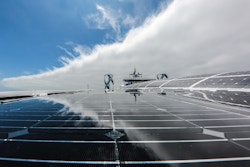
To avoid losing the energy dissipated as heat, the Energy Observer engineers installed a recovery system for the heating and hot water used in the living quarters nacelle.
Read moreA warm welcome to the Energy Observer laboratory, where engineers, researchers and scientists are developing innovations, which will make renewable energies a reality for all.











